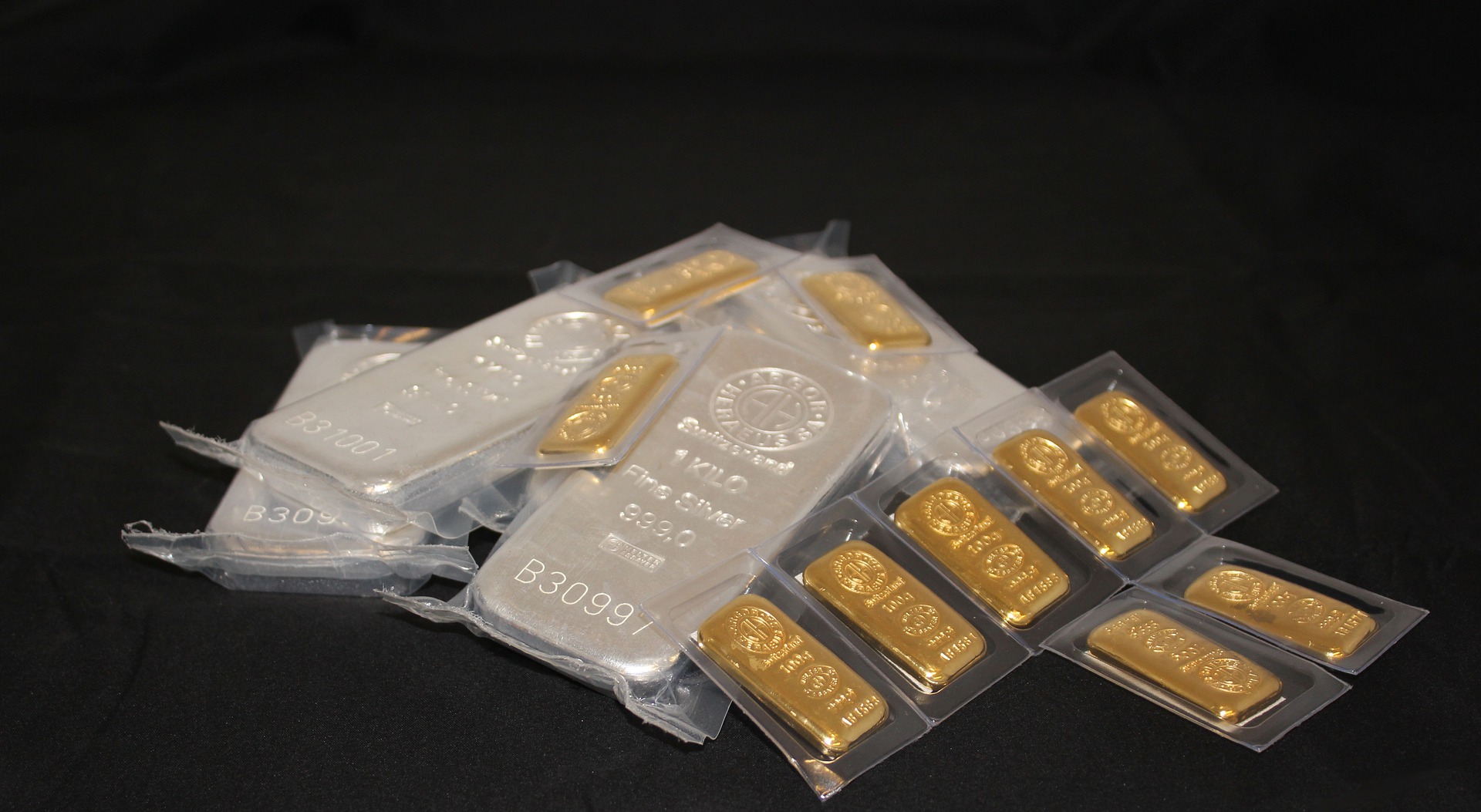Important information about the gold-silver ratio
Further information » The Gold-Silver Ratio: An introduction
Summary
- 7 minutes read
What does the Gold Silver Ratio mean?
The gold-silver ratio expresses the ratio of gold to silver, or strictly speaking, the relative strength of gold versus silver prices. So, the lower the value of the gold-silver ratio, the higher the price of silver will be relative to the price of gold.
This numerical ratio makes it easier for investors to assess whether gold or silver is undervalued or overvalued. However, investment decisions should never be based on the gold-silver ratio alone.
Please Note: OrSuisse does not sell precious metals and does not provide investment advice. This article provides general information about the “Gold Silver Ratio”. It is based on current understandings, and could thus be subject to change.
Before making an investment decision, in addition to the gold-silver ratio, the following factors which determine the supply and demand for gold or silver (and therefore influence prices) should also be considered:
- current interest rate levels
- economic situation and industrial demand
- dollar conversion rate
- global political context/current crises
- demand situation in key markets of India and China
- speculation on the futures market
If you wish to buy ex-VAT silver, you will find all the important information about this topic on the linked OrSuisse website.
Advice or questions? Please contact us

How to calculate the Gold Silver Ratio
The gold-silver ratio is determined simply by dividing the current price of gold by the price of silver.
An example (market status: 11 November, 2022):
Gold price in dollars per troy ounce: 1,761.54 USD
Silver price in dollars per troy ounce: 21.49 USD
In the above example, the gold-silver ratio is 81.97. How should this be interpreted? To buy one ounce of gold, investors would currently have to spend 81.97 ounces of silver worth $1,761.54.
The checkered history of the gold-silver ratio
Over the longer term, the gold-silver ratio has been subject to a broad range of movement. For instance, in the 100 years between 1917 and 2017, this indicator has fluctuated between 1:14 and 1:100. And over the past 20 years, the gold-silver ratio has fluctuated between 1:31 and 1:81. This ratio can be traced back to well before the birth of Jesus Christ and the founding of the Roman Empire.
In pre-Christian times, silver had an even higher value than gold because it was renowned for its antiseptic benefits. In ancient Egypt, the gold-silver ratio was 3:1, while in the time of the Lydian King Croesus in the 6th century, and later in the time of Alexander the Great, the gold-silver ratio had risen to 10:1. These cultures already used gold and silver coins as a means of payment. The gold to silver ratio remained at this level until shortly after the birth of Christ, but had reached 15:1 by the 5th century AD. The indicator remained at this same level until the end of the 19th century.
In the course of demonetization, the US Coinage Act abolished silver as legal tender, which caused the price of silver to fall.
As a result, the ratio of gold to silver prices had doubled to 30:1 by the beginning of the 20th century. And in the years from 1900 to 2012, the value of this indicator fluctuated within a broad range of 15:1 up to as much as 100:1 (see timeline of ratio values).
If you are looking for safe storage for gold or silver, with maximum discretion, you will find a lot of important information on our linked website. You will also find valuable information about the options for storing gold outside the EU, what this entails, and what advantages this offers.
Timeline of ratio values
The following graphic shows a timeline of the gold-silver ratio since 1965. The values used are the respective gold and silver prices at the end of each year.
Gold-to-silver ratio since 1900
During the Great Depression of the 1930s, low demand and high inventories were the typical characteristics of the silver market. The start of World War II caused the price of gold to skyrocket. Thus, at its peak, the ratio of gold and silver prices climbed to almost 100:1. The subsequent economic boom and growing industrial consumption after 1945 led to a shortage of silver, and thus caused the price to rise sharply. Consequently, the metric normalized once again, falling to a low of 17:1. The 1970s saw rising silver prices as the demand for this precious metal surged. At this time, the so-called ‘Hunt speculation’ also had a strong price-driving effect. Americans Nelson Hunt and his brother were then the richest men in the world. Through constant silver purchases, and later even working together with wealthy Saudi partners, they drove the price from $1.50 a troy ounce to $49 in 1979.
The gold/silver ratio has fluctuated wildly since the early 1990s.
What could affect the gold-silver ratio going forward?
The natural occurrence of gold and silver has an impact on the value development of precious metals. Although silver occurs 15 times as often in the earth’s crust as gold, there is still a higher percentage of gold available for mining by current methods.
Because silver is mostly found near the surface, most of the deposits have probably already been recorded – especially as silver deposits can even be tracked via satellite.
Gold deposits, on the other hand, are much more difficult to discover. Thus, from a global perspective, it can safely be assumed that some deposits of this yellow metal are still undiscovered. However, if or when these deposits are discovered and then mined, this factor alone would also change the gold-silver ratio.
Industrial usage of gold and silver
Silver is used in many different ways in industry: in electronics, for example, it is found in printed circuit boards and in superconductors. Silver is also used in photography, and for the production of solar cells, to name just a few applications. As the global economy expands, the demand for silver is also expected to continue to rise, particularly in emerging markets. In addition, industry has currently found relatively few alternative options to potentially replace this precious metal with other materials.
Yet despite this high demand and silver’s obvious industrial importance, unlike gold, it is still valued very cheaply. A number of experts consider this low rating to be misguided. They assume that silver could appreciate significantly in the medium term because of its major importance in the industrial sphere. See this Wikipedia article on the price of silver for more information.
How the production of gold and silver affects their valuation
Silver is usually recovered just as a by-product of mining other metals, such as copper. Thus pure silver mines are extremely rare. This fact in turn influences the price of silver, because the metal is constantly being mined regardless of demand. In practical terms, this means funding options cannot be easily expanded or reduced if the demand for silver fluctuates.
Gold production, on the other hand, can be adjusted very quickly in response to fluctuations in demand. A major factor here is the high costs gold mining incurs. As a result, funding these costs alone accounts for around 30 percent of the total gold price. With silver, however, the cost of production represents only 15 percent of the total price. Production costs therefore play a significant role in the relative pricing of these two precious metals.
The residual volume of recoverable gold and silver reserves
Experts estimate that around 1.7 million tons of silver, and around 0.17 million tons of gold, have been mined worldwide to date. This corresponds to an average ratio of 1 to 10 – although this ratio has fluctuated considerably in the past. This is mainly due to the impact of the different technical considerations which apply to gold and silver mining. However, the increasing demand for gold is also an important reason behind this production trend.
Commodity experts estimate the total amount of gold still to be mined worldwide is around 270,000 tons, while placing the corresponding amount of silver that can still be mined worldwide at 2.25 million tons. In practical terms, this means that around eight times as much silver as gold is still available to be mined.
Due to the strong industrial demand for silver, global resources could be exhausted as early as 2045. On the other hand, global gold reserves not yet mined could last until 2056. However, these assumptions only apply provided no strong demand outliers emerge.
And there is another aspect to consider: Nine out of ten gold ounces mined over the millennia are still available today. This is because gold is usually stored, and in fact only ‘consumed’ in very small quantities. However, the silver situation is rather different: only two-fifths of the original production volume is still in circulation – the rest has already been used up by industrial processing.
How investment subsidies could affect the spot price
Gold mining is expensive, and mining costs are expected to continue to rise in the coming years, primarily because the remaining gold deposits in the earth’s crust are becoming increasingly difficult to reach. In addition, newly discovered production regions usually require the development of an entirely new infrastructure. The opposite applies with silver: The production costs are relatively stable, and will tend to decrease in the coming years thanks to more efficient technologies.
Summary
- The gold-silver ratio shows the relationship between the prices of gold and silver.
- In the past 20 years, the gold-silver ratio has fluctuated between 1:31 and 1:81.
- At the beginning of World War II, the gold-silver ratio climbed to almost 100:1 at its peak.
- Silver has a variety of industrial uses, while gold by comparison is rarely used in industry.
- According to experts, 1.7 million tons of silver and 0.17 million tons of gold have so far been mined worldwide.1.7 Millionen Tonnen Silber und 0.17 Millionen Tonnen Gold gefördert worden.
